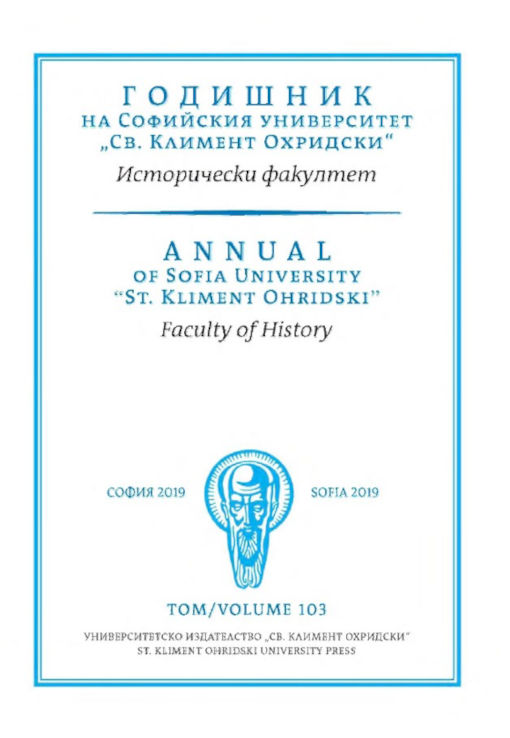Мястото, наречено Баница
The place called Banitsa
Author(s): Elissaveta MoussakovaSubject(s): Christian Theology and Religion, History, Local History / Microhistory, Middle Ages, Theology and Religion, 13th to 14th Centuries, Eastern Orthodoxy
Published by: Софийски университет »Св. Климент Охридски«
Keywords: manuscript; Banitsa Gospels; Vratsa; Vevi; Karie; Mount Athos
Summary/Abstract: In the manuscript known as the Banitsa Gospels the colophon of the priest John reveals that it was completed in "St Nicholas, in the place called Banitsa". Benyo Tsonev suggested, mainly from philological evidence, that this allegedly detailed comment refers to the village of Banitsa near Vratsa (North-West Bulgaria) and its church St Nicholas. Indeed, the scholar also considered other locations of the same name but eventually he and all other researchers after him accepted the Vratsa region as the most рrоЬаЫе place of origin of the manuscript. What is more, certain authors ranked Banitsa as а literary centre related to the capital Tamovo. Not only the peculiarities of the codex, but also the lack of data about any scribal activity in Banitsa or in Vratsa itself in the late thirteenth or early fourteenth century, demand an attempt to confirm or reject Tsonev's attribution. Starting from the unclear reference "St Nicholas" (church or monastery?), the proЫematic existence of literary centre of either in/near the village and the evidence of the Greek titles (in Cyrillic script) of the Gospels of Luke and John, the author of this paper reconsiders the question of the manuscripts' origin. As far as sources were consulted, none of the proposed solutions - the present-day villages Vevi near Florina and Karie near Seпes, the metochion Banitsa on Mount Athos and the castle Banishta near Bachkovo Monastery - proved satisfactory; so Tsonev's arguments remain valid. The reason of this study then lies in the tum of the perspective: the Banitsa Gospels should not any more Ье seen as an evidence for а village with scribal activity, but as а departure point towards proving the provenance and estaЬlishing the characteristics of а supposed centre in а cultural contact zone. Only in this way will bе substantiated either Naumov's and Skomorokhova's opinion of the liturgical novelty of the rubrics and the early date of the manuscript or Vakareliyska's claim of its later composition in the mid fourteenth century and its membership in а group of Gospels preserving а remarkaЬly archaic textological tradition.
Journal: Годишник на Софийския университет „Св. Климент Охридски“ – Исторически факултет
- Issue Year: 103/2019
- Issue No: 1
- Page Range: 20-31
- Page Count: 12
- Language: Bulgarian

